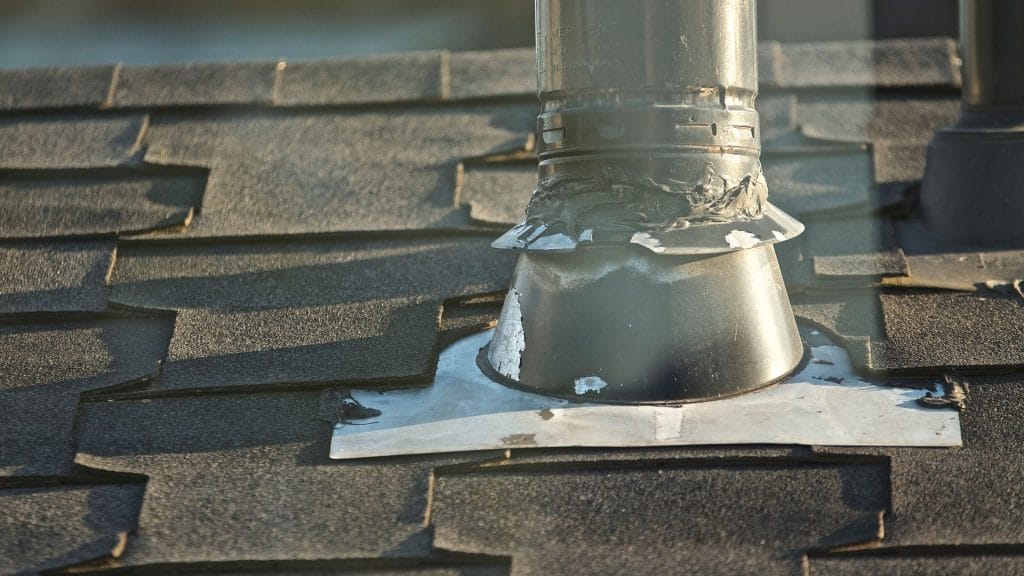Roof Vent Leak in Central Florida? Here’s How to Spot It Before It Gets Costly
Not all roof leaks come from missing shingles or storm damage. A roof vent leak is one of the most common hidden problems in Central Florida homes. Because vents penetrate your roof, any cracked boot, loose flashing, or failed seal can let water inside—causing slow, costly damage you may not see until it’s too late. Here’s how to recognize the warning signs, how pros fix it, and when repair versus replacement makes sense.
Roof Vent Leak: 6 Signs of Trouble
- Ceiling stains near bathrooms or kitchens: Vents are often above plumbing-heavy areas.
- Peeling paint or bubbling drywall: Moisture intrusion near vent pipes can spread downward.
- Mold or mildew smell in the attic: Hidden leaks create damp insulation and trapped humidity.
- Shingle discoloration: Stains radiating from a vent boot can signal leakage.
- Drips during heavy rain: Especially when the leak lines up with a vent location.
- Daylight around the vent: From the attic, visible gaps mean failed flashing or seals.
What Causes a Roof Vent Leak?
Central Florida’s intense sun and seasonal storms put stress on vent boots and flashing. The most common causes include:
- Cracked or deteriorated vent boot rubber: UV exposure makes rubber brittle over time.
- Loose or corroded flashing: High winds and rain can lift flashing or wear it down.
- Poor installation: If nails or seals weren’t set correctly, leaks often follow.
- Age: Most vent boots last 8–10 years before they need replacement.
How Roof Vent Repairs Work
When a roofer inspects a roof vent leak, they’ll typically:
- Check the boot, flashing, and shingles around each vent.
- Remove cracked or loose boots and flashing.
- Install a new vent boot—usually rubber, silicone, or lead depending on the roof system.
- Seal all connections with manufacturer-approved sealants.
- Replace surrounding shingles if they’ve been damaged.
These fixes are straightforward but must be done right. Improper sealing or missing nails can lead to repeat leaks.
Roof Vent: Repair vs. Replacement
If only the boot is cracked and the roof is otherwise healthy, repair is the affordable option. But if multiple vents are failing, or if the roof is approaching 15–20 years of age, replacement may be more cost-effective. In that case, our roof replacement service ensures new vents, boots, and flashing are installed to last.
Free Roof Inspection: Let us identify whether you need a quick vent boot replacement or a larger repair. Book now or call (407) 461-0234.
Book a Free Roof Inspection
We serve Central Florida homeowners in Orange, Seminole, Osceola, and Lake counties. If you’ve noticed ceiling stains or musty smells, don’t ignore them—schedule your free inspection and we’ll confirm whether a roof vent leak is to blame.
Trusted Sources
- Asphalt Roofing Manufacturers Association (ARMA) — guidance on flashing and vent installation.
- GAF Technical Bulletins — professional recommendations for vent boot replacement.
- Florida Climate Center — rainfall and humidity trends impacting roof vent leaks.
FAQs
How do I know if I have a roof vent leak?
Look for ceiling stains, musty smells in the attic, or visible cracks in vent boots. A free professional inspection can confirm it quickly.
Can I patch a roof vent leak myself?
DIY caulking may buy time but usually fails fast. Professional boot and flashing replacement is the lasting fix.
How much does roof vent leak repair cost?
Most repairs are affordable, depending on roof pitch and accessibility. Book a free inspection for an exact quote.
Will insurance cover a roof vent leak?
Coverage varies by policy. Some insurers cover sudden leaks; long-term wear may not be included. Always document damage before repairs.














